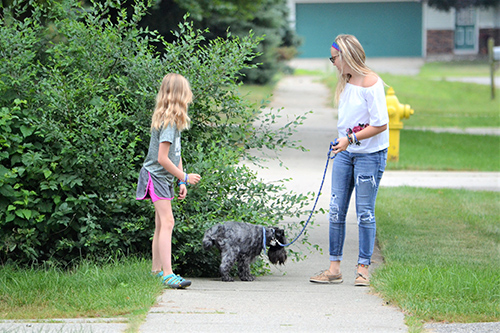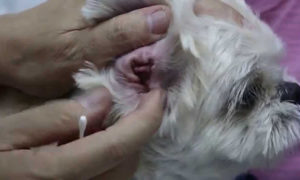
Before you go out and purchase your first Shih Tzu, you should know that there are some Shih Tzu hereditary problems that every owner should be aware of.

However, there is no need to be scared about Shih Tzu ownership; in this article, I want you to be aware of these health conditions associated with this breed. Therefore, you will know when to take your companion to the vet.
As you already know, Shih Tzus have a unique head that is flat and broad. This type of crown is known as Brachycephalic. Coincidentally, it is this unique head shape that attracts most people to the breed.
Unfortunately, this attractive feature of its head and face is what makes it so susceptible to heatstroke as well as breathing issues.

Remember, it is imperative to take your new Shih Tzu to the vet if you suspect she has any breathing or overheating issues.
A lot of dog owners rely too much on the internet when their dogs look ill. Do not waste time on the internet; if your dog looks distressed, please take her to the vet immediately.
Overheating and Heatstroke
As I mentioned earlier, because of the Shih Tzu’s brachycephalic skull — breathing can be difficult, especially in hot climates. This problem is a result of the breed’s short nasal passageway.
Their skull shape limits the amount of air that they get. It varies from dog to dog; therefore, you must observe your dog’s breathing during long walks on hot days.
Shih Tzus are not outside dogs. Therefore, if you plan on bringing one into your family, be advised that you need to keep it inside the house.
Shih Tzu Hereditary Problems: Stenotic Nares

Stenotic nares or pinched nostrils is an abnormality that is common amongst brachycephalic breeds. These dogs have a broad and short head such as Pugs, English Bulldogs, Pekingese, Shih Tzus, Boxers, and Boston Terriers.
Brachycephalic dogs are susceptible to decreased airflow through their upper respiratory tracts, nose, mouth, and larynx. Unfortunately, this condition is a result of the dog’s anatomy.
These dogs also suffer from other ailments, including eversion of the laryngeal saccules, an overlong soft palate, and laryngeal collapse. These conditions are a result of tissues behind the vocal folds that tend to evert into the lumen and cause the obstruction of air.
The cause of these conditions is the cartilage malformation of the nose, which is prevalent in the selective breeding of dogs with short noses.
Even though stenotic nares exist at birth, dog owners do not notice any medical signs of respiratory distress until they are several years old. This condition affects either sex.
There is a danger of progressive respiratory distress due to the increased airway resistance for an extended period. Because of the immense negative pressure of the amplified effort to inhale continually draws it in, the larynx will eventually weaken. As a result, the larynx will collapse, which will result in the dog being powerless to transfer an adequate volume of air into the lungs. Dogs affected will eventually appear blue and later die if left untreated.
Shih Tzu Hereditary Problems: Soft Palate Issues
Shih Tzus are also susceptible to cleft palate and elongated soft palate. These conditions happen when the dog is in the embryonic state where the tissue in the nose that separates the nasal passage from the throat and oral areas does not correctly fuse.

Thankfully, this condition is not a significant health issue. However, in severe cases, surgery can repair the deformity and take care of some respiratory problems. Hopefully, this article gives you an idea of what to expect when you first get that cuddly bundle of cuteness. Even with these health concerns, the Shih Tzu will still live a long healthy life. Shih Tzus have a life expectancy of 10 – 16 years.
Remember, A Shih Tzu is a beautiful dog with a silky soft and long coat. Do not let the Shih Tzu hereditary problems deter you from rescuing, adopting, or purchasing a Shih Tzu puppy.
Additionally, the Shih Tzu’s hair is also essential for the health of the breed. For example, Shih Tzu coats that are not regularly groomed will become tangled or matted, causing skin issues like scratching, skin infections, and parasite infestation.




